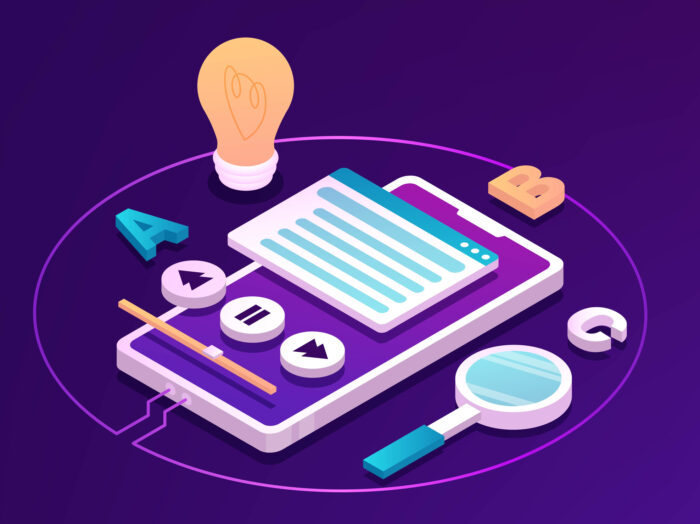Whether we realise it or not, just-in-time learning is something we’re all familiar with in our everyday lives – whether that’s Googling a particular fact, looking up a recipe we want to create today, or checking how to spell a word that we want to use straight away. In a work situation, employees have similar expectations of being able to access relevant information almost immediately which is why just-in-time learning is so effective. It’s beneficial for both employees and employers, meeting the need for fast, effective and budget-friendly training.
What is just-in-time learning?
Just-in-time learning is an approach to training and skills development where individuals learn what they need to know at the precise point that they need to know it, instead of wasting time on irrelevant training that isn’t immediately applicable to their situation. In place of traditional in-depth structured courses where time is devoted to learning a broad range of information, just-in-time learning lets learners access the information they need then and there, to solve a particular problem or address a specific task.
The idea behind just-in-time learning is often attributed to the Toyota Production System which developed a way of working in which parts were delivered just at the point of distribution – just in time – which enabled the production to be faster and more cost effective. The concept was developed and applied to learning over time, leading to the development of just-in-time training.
Using a variety of resources like online guides, instruction videos and articles, just-in-time learning is particularly useful in fast-paced work environments where the skills needed, especially around rapidly evolving technology, change quickly. Just-in-time training allows individuals to acquire the skills they need as those changes happen.
What are the benefits of just-in-time training?
1. Efficiency
Just-in-time learning is the most efficient way possible to train employees. This approach focuses only on what information is necessary to achieve immediate goals. Learners don’t have to waste their time learning topics and skills and aren’t relevant to their specific position and situation and this efficiency maximises productivity. By reducing the amount of time needed to acquire immediately relevant skills, the traditional approach to slower learning is replaced by an approach which maximises time and resources for immediate benefit.
2. Flexibility
With just-in-time training focused on fulfilling an employee’s current requirement for information or learning a new skill, individuals are empowered to adapt quickly to changing circumstances or demands. The flexibility of the just-in-time approach gives them the ability to access resources as they need them and on their own time-scale. Unlike traditional courses which are bound with a rigid schedule and timeline of tuition, employees can learn at their own pace and convenience which helps them fit their learning around the day-to-day demands of their role.
By offering a range of learning resources, employees can also choose the materials that suit their preferred learning style and by making use of digital tools to deliver the learnings, individuals can access the resources on-demand and on the go.
3. Affordability
Traditional training is usually associated with high costs related to expenses incurred for travel, accommodation or even simply the time employees spend completing the course instead of performing their daily role. Just-in-time learning offers targeted learning solutions without these additional expenditures and without taking employees away from their routine for prolonged periods.
By focusing entirely on what individuals need to know, there and then, time wasted learning material that is irrelevant to the situation is minimised and skills are developed more cost-effectively. Additionally, narrowing down the amount of information an individual needs to consume makes creating the learning materials less time-consuming for employers as well.
4. Adaptability
One of the main benefits of the just-in-time learning approach is the adaptability of the material to rapidly changing industries or work environments. The ability for employees to learn quickly and adapt to new technology, new situations or develop a new skill is becoming increasingly important in a fast-paced workplace. Enabling individuals to learn quickly and easily lets them stay abreast of new developments within their industry or specific workplace and ensures that your workforce stays competitive and relevant.
Because the depth of material in just-in-time training is less time consuming to create as well as digest, it’s easier to create new content or update relevant information.
5. Continuous Improvement
A culture of continuous improvement is appealing to both employees who want to grow in their role and remain engaged and curious, and employers who need a motivated and skilled workforce. Empowering your employees to constantly acquire new skills and knowledge as they encounter new challenges or opportunities is a great way to reduce frustration and increase competencies.
Continuous improvement with a just-in-time approach reduces the cognitive overload a traditional course might generate and helps your employees feel more in control of their learning. By immediately applying the relevant knowledge they have learned, there is an instant reward to their efforts and the reduced time between learning and application increases the likelihood of knowledge retention.
Using just-in-time training to help employees continually develop and grow in their roles leads to an environment of ongoing personal and professional growth. This, in turn, leads to more skilled, engaged and motivated workers.
How to implement just-in-time learning in the workplace
Implementing just-in-time learning can have a huge impact on how your employees learn and apply their skills, but it needs a structured approach to ensure that it’s effective.
Applying these three steps will help you create a successful just-in-time learning approach.
1. Identify Your Goal
The first step is to identify exactly which information your employees need just-in-time and the most effective way to do that is to work backwards by identifying your end goal first. Defining your goal – the tasks you want your employees to be able to complete after training, or the skill you’d like them to gain – lets you work out what needs to be accomplished or understood through training.
Assess what your workforce already knows and pinpoint the pain points where they need more information. By targeting these pain points, you’ll be able to have an immediate impact on their performance. Once you have established the information they need, you can focus on highly relevant topics and critical material that directly relates to your goal.
2. Create Easily Digestible Learning Resources
Bite-sized information allows learners to access relevant content rapidly without having to sift through lengthy materials, which saves time and effort in both the creation of the material and the delivery of it. Short, direct content has been proven to be most effective – especially with decreasing attention spans – and easily digestible content means learners won’t lose interest.
Smaller chunks of information help your employees maintain focus and attention on specific concepts or tasks. By breaking down complex topics into smaller chunks, your employees can digest information more easily and concentrate on mastering one concept at a time. It also means they are more likely to retain the information they receive.
Your resources could include articles, tutorials, videos, courses or quizzes. Organising them into one place centralises your resources and makes them easy for individuals to find.
3. Use Software to Support Your Just-In-Time Training
The right software can make your learning approach effective and efficient. It can give learners on-demand access to informative, task-relevant guidance, interactive learning resources and a personalised learning path.
Using a digital adoption platform (DAP), like Omniplex Guide, provides users with immediate access to information and guidance within the context of their workflow. This fits the principles of just-in-time-learning, allowing employees to find answers quickly and precisely when they need it.
You can use a DAP to incorporate interactive tutorials, walkthroughs and help features that enable individuals to learn by doing. A DAP also enables learners to receive the information they need without even having to leave the task that they’re working on.
4. Measure Your Learning Outcomes
Measuring learning outcomes in just-in-time learning is crucial for assessing effectiveness and guiding improvement. Making sure that the materials you provide remain relevant and up to date helps you keep in line with your goals, as well as identifying areas where you could make it even more effective.
You could track performance metrics, such as knowledge acquisition, skill development, and task completion rates and by analysing the data you gather, you can gauge the impact of your just-in-time learning initiative to make sure it’s a success. Continuous evaluation enables iterative improvement, ensuring that your just-in-time learning remains responsive, relevant, and effective in addressing the goals you’ve identified.
Being structured in applying just-in-time learning ensures that your employees learn effectively and efficiently. It helps prioritise relevant information, align learning goals with immediate needs, and optimise resources. By thinking carefully about how to facilitate quick access to targeted knowledge, you’ll enable your workforce to solve problems, acquire new skills and adapt to changing circumstances, which, in turn, will lead to enhanced productivity and performance.
To learn more about how Omniplex Guide can help you implement a just-in-time learning strategy, please get in touch and we’ll be happy to discuss your requirements.




